challenger
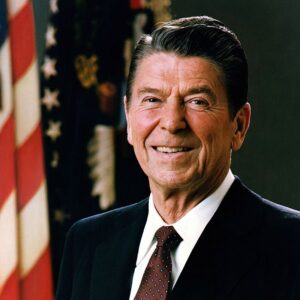
 As events from the past get further and further from the present, it’s easy to forget all about them, and for the younger generations…well, they never knew about them, unless they learned about them in history class. In my opinion and the opinion of many conservatives, one of the greatest presidents of all time, was President Ronald Reagan. As a young man, I’m sure no one would have expected that he would even pe president. He was, after all, an actor, and not a politician. Nevertheless, he stepped out of that role, and became first the governor of California, and later the President of the United States, and it was at a pivotable time in history that he was the president.
As events from the past get further and further from the present, it’s easy to forget all about them, and for the younger generations…well, they never knew about them, unless they learned about them in history class. In my opinion and the opinion of many conservatives, one of the greatest presidents of all time, was President Ronald Reagan. As a young man, I’m sure no one would have expected that he would even pe president. He was, after all, an actor, and not a politician. Nevertheless, he stepped out of that role, and became first the governor of California, and later the President of the United States, and it was at a pivotable time in history that he was the president.
Our nation was in the middle of the Cold War, which had really fired up in 1945, at the end of World War II, and continued on until 1991. During that time, we experienced the Iran Hostage Crisis on November 4, 1979, that lasted until January 20, 1981, spanning a total of 444 days. The hostage rescue finally came after President Reagan ordered it, when he became president. He was not afraid to act. He saw something that was unacceptable, and he remedied it…just hours after his inaugural speech. It shouldn’t have taken 444 days to 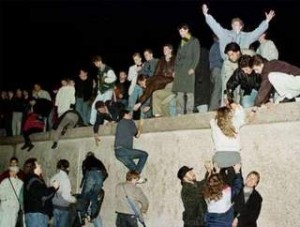
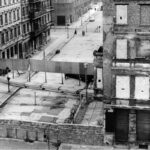 free these hostages, but until President Reagan stepped in, there was just one attempt, and it failed. The 52 hostages felt forgotten, until President Reagan and the men he sent in, rescued them.
free these hostages, but until President Reagan stepped in, there was just one attempt, and it failed. The 52 hostages felt forgotten, until President Reagan and the men he sent in, rescued them.
During President Reagan’s two terms in office, he worked tirelessly to change many things for the better. He hated tyranny, no matter what country it invaded. He looked at the Berlin Wall for what it was tyranny. Those people had been taken hostage and separated from their friends and family for long enough. In one of his most well-known speeches, President Reagan called for the tyranny to end, when on June 12, 1987, he challenged Soviet Leader Mikhail Gorbachev to “tear down this wall,” which had long been a symbol of the repressive Communist era in a divided Germany. Of course, the wall didn’t come down immediately, and in fact, it wasn’t until November 9, 1989, that it actually came down.
President Reagan was at the helm when the Space Shuttle Challenger exploded just 73 seconds after liftoff. It was a tragic event in the space program, and the people of this nation need to be consoled. President Reagan was just the man to give this nation the support it needed. His speech that day was supposed to have been the 1986 State of the Union speech, but President Reagan knew this was more important, so he delayed the State of the Union speech, and instead gave a speech to console us saying, “Ladies and gentlemen, I’d planned to 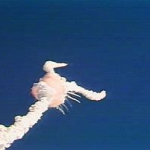
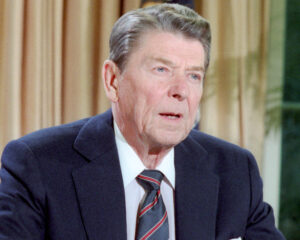 speak to you tonight to report on the state of the Union, but the events of earlier today have led me to change those plans. Today is a day for mourning and remembering.” He concluded his speech saying, “We will never forget them, nor the last time we saw them, this morning, as they prepared for their journey and waved goodbye and ‘slipped the surly bonds of earth’ to ‘touch the face of God.'” President Reagan was truly a great president. President Reagan served two terms as president, from 1981 to 1989. He died on June 5, 2004, at age 93.
speak to you tonight to report on the state of the Union, but the events of earlier today have led me to change those plans. Today is a day for mourning and remembering.” He concluded his speech saying, “We will never forget them, nor the last time we saw them, this morning, as they prepared for their journey and waved goodbye and ‘slipped the surly bonds of earth’ to ‘touch the face of God.'” President Reagan was truly a great president. President Reagan served two terms as president, from 1981 to 1989. He died on June 5, 2004, at age 93.
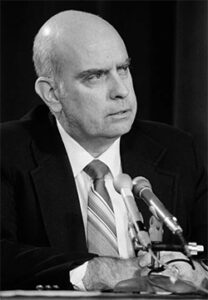
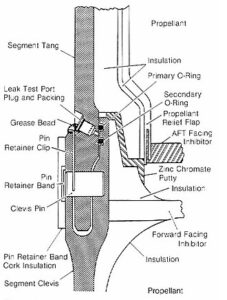 The Space Shuttle Challenger mission, named STS-51-L, was the twenty-fifth Space Shuttle flight and the tenth flight of Challenger. The crew was announced on January 27, 1985, and was commanded by Dick Scobee. Michael Smith was assigned as the pilot, and the mission specialists were Ellison Onizuka, Judith Resnik, and Ronald McNair. The two payload specialists were Gregory Jarvis, who was assigned to conduct research for the Hughes Aircraft Company, and Christa McAuliffe, who flew as part of the Teacher in Space Project. The mission was originally scheduled for July 1985, but was delayed to November and then to January 1986. The mission was scheduled to launch on January 22, but was delayed until January 28, 1986. This was definitely a “less than ideal” situation. Delay after delay, maybe should have raised a serious red flag, but somehow, it did not. At least not to the people who could have changed the outcome.
The Space Shuttle Challenger mission, named STS-51-L, was the twenty-fifth Space Shuttle flight and the tenth flight of Challenger. The crew was announced on January 27, 1985, and was commanded by Dick Scobee. Michael Smith was assigned as the pilot, and the mission specialists were Ellison Onizuka, Judith Resnik, and Ronald McNair. The two payload specialists were Gregory Jarvis, who was assigned to conduct research for the Hughes Aircraft Company, and Christa McAuliffe, who flew as part of the Teacher in Space Project. The mission was originally scheduled for July 1985, but was delayed to November and then to January 1986. The mission was scheduled to launch on January 22, but was delayed until January 28, 1986. This was definitely a “less than ideal” situation. Delay after delay, maybe should have raised a serious red flag, but somehow, it did not. At least not to the people who could have changed the outcome.
One man…Roger Boisjoly knew that the Challenger space shuttle might fail catastrophically at any time. There may have been others I suppose, but none that chose to try to take action. Boisjoly knew that every mission was an accident waiting to happen. Knowing that, he tried to stop the launch on January 28, 1986. He had a definite sick feeling about this mission, but NASA refused to acknowledge his objections. That fact amazes me!! Boisjoly was a rocket engineer who worked for a company that NASA contracted with. He had noticed that the Challenger’s booster rockets had a major design flaw. Their elastic seals had a tendency to stiffen and unseal in cold weather. I’m sure that most of NASA simply took for granted that there would not be much cold weather in Florida. Nevertheless, on this occasion, the Challenger was scheduled for a winter launch. The time had come, and Boisjoly knew that the temperatures would be too low for the booster rocket seals to handle, even in Florida. He convinced colleagues at his engineering company to formally recommend NASA delay the launch. They did, but NASA ignored that recommendation. It was a life altering, or life ending decision on NASA’s part. Most of us know that the rest is history. The launch took place, the seals failed, and the Challenger exploded less than two minutes after it launched. That day, because of the foolish stubbornness and arrogance of NASA, seven people lost their lives. The air temperature on that January 28 was predicted to be a record-low for a Space Shuttle launch. The air temperature was forecast to drop to 18° F overnight before rising to 22° F at 6:00am and 26° F at the scheduled launch time of 9:38am. For most of us, those temperatures wouldn’t seem 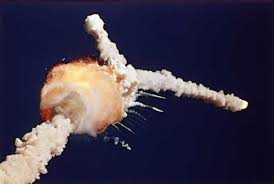
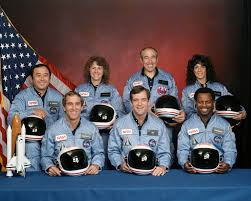 to be so severe, but for that little seal, it was very severe. Why couldn’t they have swallowed their pride, and postponed a little longer until the temperature warmed a bit. Were we really in that big a rush to start that mission, that we were willing risk the lives of seven people in the attempt. I love the space program and all that it has accomplished, but the people who made that choice that day were foolish and selfish.
to be so severe, but for that little seal, it was very severe. Why couldn’t they have swallowed their pride, and postponed a little longer until the temperature warmed a bit. Were we really in that big a rush to start that mission, that we were willing risk the lives of seven people in the attempt. I love the space program and all that it has accomplished, but the people who made that choice that day were foolish and selfish.
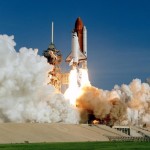 September 17, 1976 was an epic day in American history, and truly in world history as well. This was the day that the seemingly impossible became possible. Man had been in space many times by that date, but the crafts taken were disposable, and the cost to build new ones was great. It would be an amazing thing to have a craft that could take man into space, and then make a smooth landing back on Earth. It was unheard of, but it was no longer impossible.
September 17, 1976 was an epic day in American history, and truly in world history as well. This was the day that the seemingly impossible became possible. Man had been in space many times by that date, but the crafts taken were disposable, and the cost to build new ones was great. It would be an amazing thing to have a craft that could take man into space, and then make a smooth landing back on Earth. It was unheard of, but it was no longer impossible.
On this day in 1976, NASA publicly unveiled its first space shuttle. The shuttle was called Enterprise, and during a ceremony in Palmdale, California, the world got its first glimpse of the future. The Space Shuttle looked like an airplane. Its development cost almost $10 billion and took nearly a decade. The shuttle would not actually fly until 1977. Enterprise became the first space shuttle to fly freely when it was lifted to a height of 25,000 feet by a Boeing 747 airplane and then released, gliding back to Edwards Air Force Base on its own accord. It was a phenomenal accomplishment. What an exciting event in NASA history!!
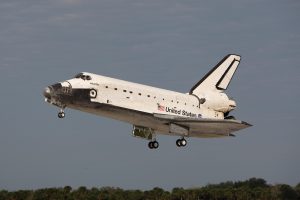
With the success of the first flight, came regular flights of the space shuttle, which began on April 12, 1981, with the launching of Columbia from Cape Canaveral, Florida. The shuttle had to be able to get into space, and so it was launched by two solid-rocket boosters and an external tank. These were ejected prior to the actual entrance into space, and only the shuttle, which looked like an actual airplane, entered into orbit around Earth. When the two-day mission was completed, the shuttle fired its engines to reduce speed and, after descending through the atmosphere, landed like a glider at California’s Air Force Base…brought to a stop with the help of three parachutes.
Early shuttles took satellite equipment into space and carried out various scientific experiments. On January 28, 1986, NASA and the space shuttle program suffered a major setback when the Challenger exploded 74 seconds after takeoff and all seven people aboard were killed. That was a horrible day in shuttle history. After changing the things that caused the problem, the shuttle flew again beginning in September 1988, when Discovery went up successfully. Since  then, the space shuttle has carried out numerous important missions, such as the repair and maintenance of the Hubble Space Telescope and the construction and manning of the International Space Station. A tragedy in space again rocked the nation on February 1, 2003, when Columbia, on its 28th mission, disintegrated during re-entry of the earth’s atmosphere. All seven astronauts aboard were killed. In the aftermath, the space-shuttle program was grounded until Discovery returned to space in July 2005, amid concerns that the problems that had downed Columbia had not yet been fully solved. On July 21, 2011, Space Shuttle Atlantis touched down for the final time, at the end of STS-135, with the official retirement of NASA’s Space Shuttle fleet taking place from March to July 2011.
then, the space shuttle has carried out numerous important missions, such as the repair and maintenance of the Hubble Space Telescope and the construction and manning of the International Space Station. A tragedy in space again rocked the nation on February 1, 2003, when Columbia, on its 28th mission, disintegrated during re-entry of the earth’s atmosphere. All seven astronauts aboard were killed. In the aftermath, the space-shuttle program was grounded until Discovery returned to space in July 2005, amid concerns that the problems that had downed Columbia had not yet been fully solved. On July 21, 2011, Space Shuttle Atlantis touched down for the final time, at the end of STS-135, with the official retirement of NASA’s Space Shuttle fleet taking place from March to July 2011.
 Inspiration comes from many different places, but most often from an event that so strongly affects our emotions or our lives, that we feel the need to act. That is what happened to a number of students who all had something in common…Christa McAuliffe. On this day, January 28, 1986…30 years ago, after months of training and a huge national following, Christa McAuliffe entered the Space Shuttle Challenger, and went down in history as not only the first teacher chosen to go into space, but the first civilian to die on such a mission. She never made it into space, because just 73 seconds after the launch, the Challenger exploded.
Inspiration comes from many different places, but most often from an event that so strongly affects our emotions or our lives, that we feel the need to act. That is what happened to a number of students who all had something in common…Christa McAuliffe. On this day, January 28, 1986…30 years ago, after months of training and a huge national following, Christa McAuliffe entered the Space Shuttle Challenger, and went down in history as not only the first teacher chosen to go into space, but the first civilian to die on such a mission. She never made it into space, because just 73 seconds after the launch, the Challenger exploded.
The world looked on in horror, because this launch had been so widely televised and so greatly anticipated. 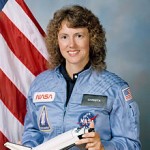 After the explosion, the news was broadcast over and over. We saw the horrified faces of the families of the crew, the tears of family, friends, and students of the first teacher in space, and we saw the explosion…over and over again. The heart of a nation was broken, not just because of Christa McAuliffe, but also for the families of payload specialist Gregory Jarvis; and astronauts Judith A. Resnik, mission specialist; Francis R. (Dick) Scobee, mission commander; Ronald E. McNair, mission specialist; Mike J. Smith, pilot; and Ellison S. Onizuka, mission specialist. It had been many years since the NASA space program had lost a crew, and it was the first one in flight.
After the explosion, the news was broadcast over and over. We saw the horrified faces of the families of the crew, the tears of family, friends, and students of the first teacher in space, and we saw the explosion…over and over again. The heart of a nation was broken, not just because of Christa McAuliffe, but also for the families of payload specialist Gregory Jarvis; and astronauts Judith A. Resnik, mission specialist; Francis R. (Dick) Scobee, mission commander; Ronald E. McNair, mission specialist; Mike J. Smith, pilot; and Ellison S. Onizuka, mission specialist. It had been many years since the NASA space program had lost a crew, and it was the first one in flight.
I’m sure that an accident in space did not inspire people to go into the space program, because the safety of the program immediately came into question. Nevertheless, from this tragedy…from out of the ashes of the Space Shuttle Challenger, inspiration did come. It came in the form of teachers. The students of Christa  McAuliffe…not all, but a number of them, were inspired to become teachers themselves. Each of those former students of Christa McAuliffe…kids who maybe didn’t like social studies, but because Christa McAuliffe made it interesting somehow, they did well in her class, and were inspired by her. After her passing, these inspired students decided that they wanted to pick up where she left off. They wanted to carry on with her dream. They follow her motto, “I touch the future. I teach.” One of those teachers commented that she heard people say that and wondered if they had any idea where that motto came from. Her former students knew…it was Christa McAuliffe, and her legacy lives on, 30 years after her death.
McAuliffe…not all, but a number of them, were inspired to become teachers themselves. Each of those former students of Christa McAuliffe…kids who maybe didn’t like social studies, but because Christa McAuliffe made it interesting somehow, they did well in her class, and were inspired by her. After her passing, these inspired students decided that they wanted to pick up where she left off. They wanted to carry on with her dream. They follow her motto, “I touch the future. I teach.” One of those teachers commented that she heard people say that and wondered if they had any idea where that motto came from. Her former students knew…it was Christa McAuliffe, and her legacy lives on, 30 years after her death.
 After a horrific accident such as Space Shuttle Challenger’s explosion 73 seconds after liftoff on January 28, 1986, taking with it seven astronauts, it is only prudent for NASA to have stopped all future flights until they knew the cause and had a fix in place. The Space Shuttle program was really NASA’s greatest achievement, and Challenger was its second shuttle into space. Challenger had a great record, having been sent into space nine times…before disaster struck on the tenth trip.
After a horrific accident such as Space Shuttle Challenger’s explosion 73 seconds after liftoff on January 28, 1986, taking with it seven astronauts, it is only prudent for NASA to have stopped all future flights until they knew the cause and had a fix in place. The Space Shuttle program was really NASA’s greatest achievement, and Challenger was its second shuttle into space. Challenger had a great record, having been sent into space nine times…before disaster struck on the tenth trip.
The Space Shuttle Challenger was first intended to be a test vehicle, Construction began in November of 1975. It was sent for testing on April 2, 1978, and after eleven months of vibration testing they decided to make it an actual vehicle. The first shuttle to be built into an actual workable unit was the Columbia, which ended up breaking up on February 1, 2003, to become the second time NASA lost lives in flight.
After Challenger blew up shortly after liftoff, NASA had to see what went wrong, and the space program was on hold for two years and eight months. Finally, after it was determined that an O-Ring failed due to weather that was too cold, a different NASA emerged. No longer would there be a rush to launch. Conditions would be right, or the launch would be scrubbed. It had to be that way. And yet we, as a nation, knew that America belonged in  space. This was more that just a whim, but was rather an important contribution in many areas. The scientists who went into space performed experiments that led to many things we use today. Not to mention all of the information we have learned about our own little part of the universe. It was time to put America back in space.
space. This was more that just a whim, but was rather an important contribution in many areas. The scientists who went into space performed experiments that led to many things we use today. Not to mention all of the information we have learned about our own little part of the universe. It was time to put America back in space.
So, on this day, September 29, 1988, NASA launched STS-26. It was the return to flight mission, and it was a success. The mission lasted four days, one hour, and eleven seconds, and traveled 1,680,000 miles, making 64 orbits around the Earth. The Shuttle that made the return to flight mission was the Discovery. On board were Frederick H Hauck, Richard O Covey, John M Lounge, Davis C Hilmers, and George D Nelson. I’m sure there were moments of anxiety, especially at the moment when the command to Go with Throttle Up, the very command that led to the explosion of the Challenger, was given. Nevertheless, these men went, and made it through that anxious moment, to have a successful mission. It was the first mission since STS-9 to use the original STS numbering system, the first to have all its crew members wear pressure suits for launch and landing since STS-4, and the first mission with bailout capacity since STS-4. STS-26 was also the first all-veteran crew mission since Apollo 11, with all of its crew members having flown at least one prior mission. I’m sure there were specific reason for each of those things, but my guess is that it was mainly to have all the best 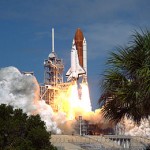 possible precautions in place.
possible precautions in place.
Besides conducting the mission’s various experiments, crew members practiced suiting up in new partial-pressure “launch-and-entry” flight suits, and also practiced the unstowing and attaching of the new crew escape system. On 2 October, the day before the mission ended, the five man crew paid tribute to the seven crew members lost in the Challenger disaster. Discovery landed on Runway 17 at Edwards Air Force Base, California, at 12:37 pm EDT on 3 October 1988, after a mission duration of four days, one hour and eleven seconds. Capsule Communicator Blaine Hammond Jr welcomed the crew, saying it was “a great ending to a new beginning.”
 Every time disaster strikes, it seems like we always remember where we were and what we were doing the moment we found out about it. Moments like September 11, 2001, the Kennedy assassinations, Reagan’s shooting, and for me, the Space Shuttle Challenger explosion, are permanently imprinted on my mind. It had been so well televised. It was to be the first time an American civilian was going into space, and she was a teacher. It was an exciting event for America, and especially for the schools and the school children, who felt like they were suddenly center stage within the space program. The nation watched as the Teacher in Space candidates went through the paces to decide which teacher would be chosen. Finally the decision was made, and out of all the candidates, a woman, Christa McAuliffe stood alone as the chosen one. It was exciting for her, the school where she taught, and her family. It was excitement mixed with anxiousness, because there was always that element of danger, that you know is possible, but you never really believe would come to pass…until it does.
Every time disaster strikes, it seems like we always remember where we were and what we were doing the moment we found out about it. Moments like September 11, 2001, the Kennedy assassinations, Reagan’s shooting, and for me, the Space Shuttle Challenger explosion, are permanently imprinted on my mind. It had been so well televised. It was to be the first time an American civilian was going into space, and she was a teacher. It was an exciting event for America, and especially for the schools and the school children, who felt like they were suddenly center stage within the space program. The nation watched as the Teacher in Space candidates went through the paces to decide which teacher would be chosen. Finally the decision was made, and out of all the candidates, a woman, Christa McAuliffe stood alone as the chosen one. It was exciting for her, the school where she taught, and her family. It was excitement mixed with anxiousness, because there was always that element of danger, that you know is possible, but you never really believe would come to pass…until it does.
I was disappointed that I had to bowl on the morning that had been chosen for the launch of the Challenger. I had hoped that I could catch some of it on the television set the bowling alley had. As secretary of the league, I  had duties to perform when I got there, but I was immediately approached by one of the bowlers, who said, “Did you hear that the space shuttle exploded?” It was so unthinkable, that my mind first thought that it exploded before anyone was in it, but deep down, I knew that this was a huge disaster. I prayed that some of them would live through it, while knowing in my heart, that they could not have lived through it. It was hard to bowl that day, but there was nothing else we could do. The televisions were on, and we watched as the explosion was played over and over again. Then we went home, and watched more of it at home. Sometimes, I think that people have a tendency to think that if they watch a disaster over and over, that maybe somehow it will have a different outcome…as irrational as that sounds.
had duties to perform when I got there, but I was immediately approached by one of the bowlers, who said, “Did you hear that the space shuttle exploded?” It was so unthinkable, that my mind first thought that it exploded before anyone was in it, but deep down, I knew that this was a huge disaster. I prayed that some of them would live through it, while knowing in my heart, that they could not have lived through it. It was hard to bowl that day, but there was nothing else we could do. The televisions were on, and we watched as the explosion was played over and over again. Then we went home, and watched more of it at home. Sometimes, I think that people have a tendency to think that if they watch a disaster over and over, that maybe somehow it will have a different outcome…as irrational as that sounds.
This whole disaster gave me a different view of the space shuttle, and so when we had the opportunity to visit the Johnson Space Center in Houston, Texas, I found the view of the space shuttle, and all it’s inner workings to be the most interesting. Standing inside the shuttle display, I felt a mixture of excitement and a little dread. It wasn’t that I was concerned for me, but rather that the Challenger’s lost astronauts came back to my mind. I felt a tiny bit of their excitement, and yet I knew that they would never get to fully live their dream, but would die  tragically just 73 second into the flight. Just a little over a minute into their dream. So close, and yet so suddenly it was over…forever. There would be no second chance for them, and this event would bring a lasting emptiness to their families. Events like these scar the people of nation. We may not think of them every day, but when we are reminded of them, such as today, on the 29th anniversary of the event, we can’t help but to be taken back to the day of the event. We can vividly picture each and every second of it, knowing that the loss of life is enormous…knowing that not only are those who died, gone from their families now, but the families are left to pick up the pieces. And we are left remembering exactly where we were when we heard the tragic news.
tragically just 73 second into the flight. Just a little over a minute into their dream. So close, and yet so suddenly it was over…forever. There would be no second chance for them, and this event would bring a lasting emptiness to their families. Events like these scar the people of nation. We may not think of them every day, but when we are reminded of them, such as today, on the 29th anniversary of the event, we can’t help but to be taken back to the day of the event. We can vividly picture each and every second of it, knowing that the loss of life is enormous…knowing that not only are those who died, gone from their families now, but the families are left to pick up the pieces. And we are left remembering exactly where we were when we heard the tragic news.

